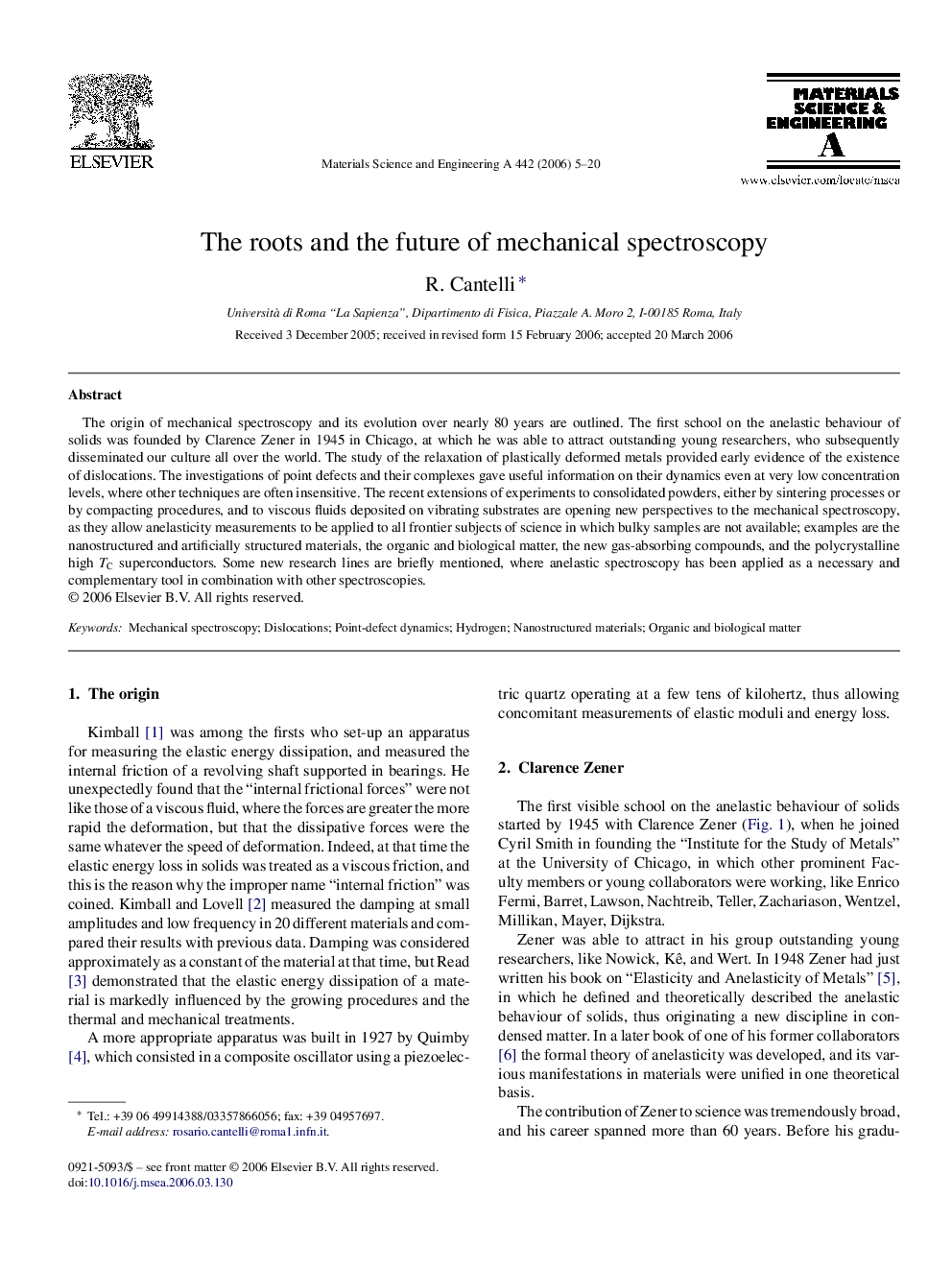| کد مقاله | کد نشریه | سال انتشار | مقاله انگلیسی | نسخه تمام متن |
|---|---|---|---|---|
| 1584603 | 1514906 | 2006 | 16 صفحه PDF | دانلود رایگان |

The origin of mechanical spectroscopy and its evolution over nearly 80 years are outlined. The first school on the anelastic behaviour of solids was founded by Clarence Zener in 1945 in Chicago, at which he was able to attract outstanding young researchers, who subsequently disseminated our culture all over the world. The study of the relaxation of plastically deformed metals provided early evidence of the existence of dislocations. The investigations of point defects and their complexes gave useful information on their dynamics even at very low concentration levels, where other techniques are often insensitive. The recent extensions of experiments to consolidated powders, either by sintering processes or by compacting procedures, and to viscous fluids deposited on vibrating substrates are opening new perspectives to the mechanical spectroscopy, as they allow anelasticity measurements to be applied to all frontier subjects of science in which bulky samples are not available; examples are the nanostructured and artificially structured materials, the organic and biological matter, the new gas-absorbing compounds, and the polycrystalline high TC superconductors. Some new research lines are briefly mentioned, where anelastic spectroscopy has been applied as a necessary and complementary tool in combination with other spectroscopies.
Journal: Materials Science and Engineering: A - Volume 442, Issues 1–2, 20 December 2006, Pages 5–20